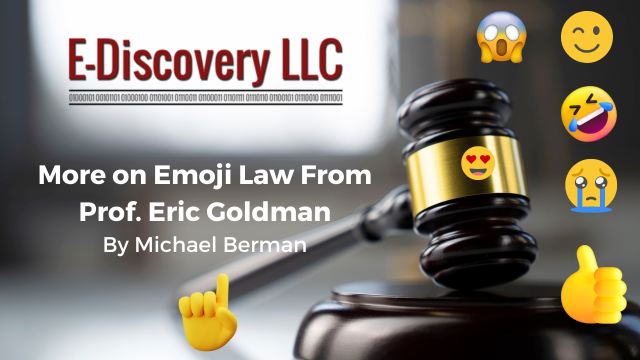
I have written several blogs on emojis, such as Emoji Forms a Contract and What Do Judge Peck’s 2009 Wm. Gross Opinion and “Zoomers” Have to Do With Each Other?
In both blogs, I pointed to Prof. Eric Goldman’s writings as an excellent resource and he has done it again in A Single Emoji Could Constitute Securities Fraud-In re Bed Bath & Beyond – Technology & Marketing Law Blog (ericgoldman.org)(July 28, 2023).
In that blog, Prof. Goldman discusses the “full moon face” emoji being used as evidence in a securities fraud lawsuit. One interpretation of the emoji was that it indicated that stock prices would go “to the moon.” Id. The plaintiffs’ argument was that the emoji was sent to encourage others to hold or buy stock before the owner dumped it at an inflated price. The sender argued that it was ambiguous and “there is no way to establish . . . the truth . . . of a tiny lunar cartoon.” Id.
Prof. Goldman reports that the court in In re Bed Bath & Beyond Corp. Securities Litigation, 2023 U.S. Dist. LEXIS 129613 (D.D.C. July 27, 2023), was deciding a motion to dismiss. It viewed the facts most favorably toward the plaintiff under the federal plausibility standard. Id. Prof. Goldman quotes the decision:
Emojis are symbols. Like symbols, language can be ambiguous. If you say, “The Nats are going to win the World Series this year,” and your friend replies, “Right,” she may be agreeing with you, but it could also be a sarcastic reply. Context and tone help elucidate meaning. Just because language can be ambiguous does not mean it is not actionable or capable of being correctly understood.
In re Bed Bath & Beyond Corp. Securities Litigation, 2023 U.S. Dist. LEXIS 129613 (D.D.C. July 27, 2023)
He wrote that the court continued:
Emojis may be actionable if they communicate an idea that would otherwise be actionable. A fraudster may not escape liability simply because he used an emoji. Just like with words, liability will turn on the emoji’s particular meaning in context.
In re Bed Bath & Beyond Corp. Securities Litigation, 2023 U.S. Dist. LEXIS 129613 (D.D.C. July 27, 2023)
The court noted that, on a motion to dismiss: “Investors appear to have relied on it, driving Bed Bath’s stock price up in the following days…..” Id.
Prof. Goldman concludes:
Still, overall, the judge handles the semantic questions properly. Emojis are always capable of multiple meanings, as are most words and other communicative symbols, and they derive their specific meaning from their surrounding context. The capability of multiple meanings doesn’t render an emoji definitionless or fatally ambiguous. For more, see my Emojis and the Law paper…. For now, take away the lesson that a single emoji could be a securities violation in some contexts. Pick your emojis carefully!
Prof. Eric Goldman, A Single Emoji Could Constitute Securities Fraud-In re Bed Bath & Beyond – Technology & Marketing Law Blog (ericgoldman.org)(July 28, 2023).
Anyone interpreting emjois should review Prof. Goldman’s writings.


